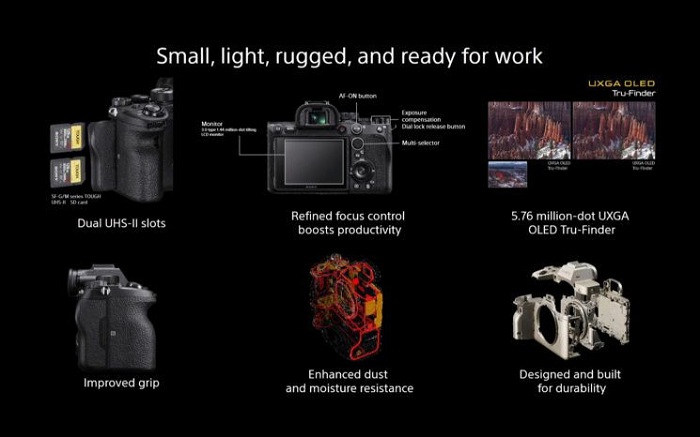Once again, Sony got an edge on its rival’s after launching its new full frame mirrorless camera with monstrous 61 mega-pixels. The A7R IV full-frame mirrorless camera packs a 61-megapixel back-side illuminated sensor with 15 stops of dynamic range. The camera tends to deliver the highest resolution yet for a full-frame camera. So, you can capture images of up to 240 megapixels using pixel-shift mode. Conversely, should you not need or want to capture enormous RAW files; it delivers 26.2 megapixel photos in APS-C crop mode.
Besides that, the new sensor offers about a 19-megapixel increase over the A7R III. And with its but backside-illuminated design, Sony says it still offers good low-light sensitivity for $3,500.
Sony A7R IV
Firstly, coming to the technical aspects of the camera, other than the base resolution, a new 16-shot pixel shift mode can capture 960 megapixels that are processed down into a single 240MP image. On the other hand, the 4-shot pixel shift mode from the A7R III also returns, which doesn’t add any spatial resolution, but does capture full color information at every pixel location. But that problem is solved by the new Sony camera.
So, Sony has revamped virtually everything for the A7R IV. The body features improved weather sealing, a stronger lens mount, and a new, more ergonomic handgrip. The electronic viewfinder has been increased to 5.76-million pixels. Whereas, the continuous shooting speed remains an impressive 10 frames per second, a speed it can hold for up to 7 seconds in both JPEG and RAW. For even longer bursts, an APS-C mode crops the image by 1.5x for extra zoom at a resolution of 26MP and can sustain continuous shooting for over 20 seconds.
It uses a new hybrid system with 567 phase-detection focus points covering 74% of the sensor, along with an additional 425 contrast-detection points. Phase detection is generally faster than contrast detection, as it can detect not only if something is out of focus, but in what direction and by how much. Sony says contrast detection is still required in some settings, however, such as low-light scenes.













Recent Comments